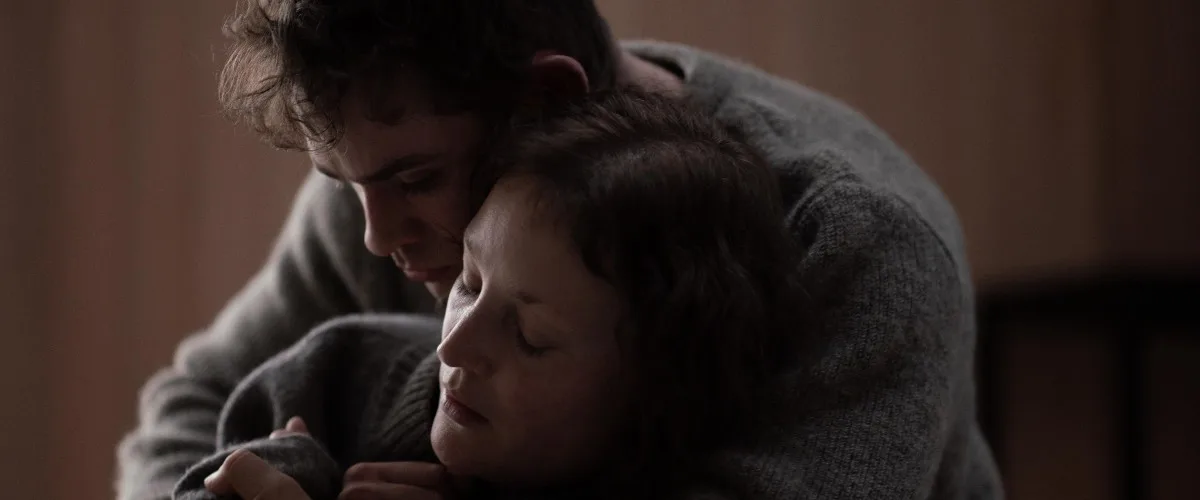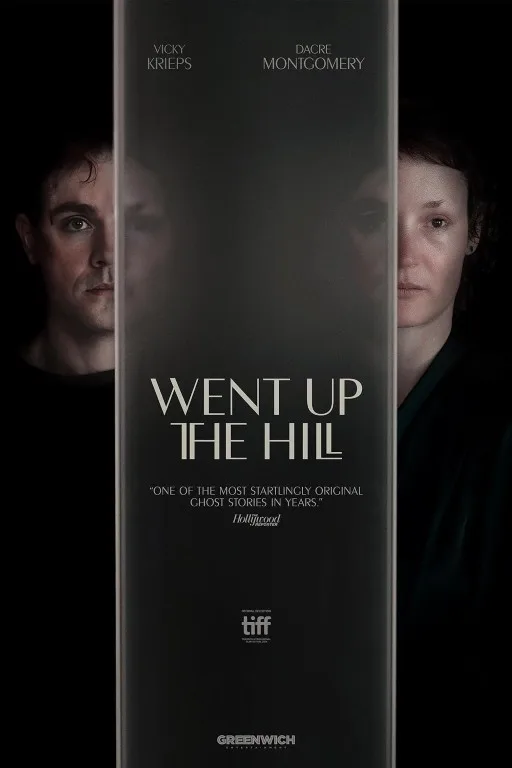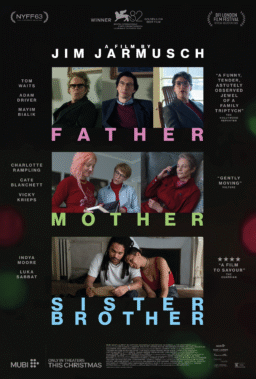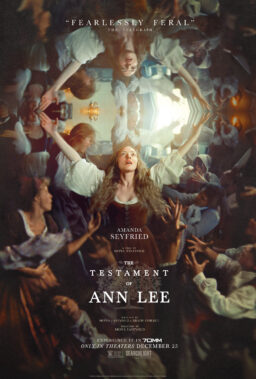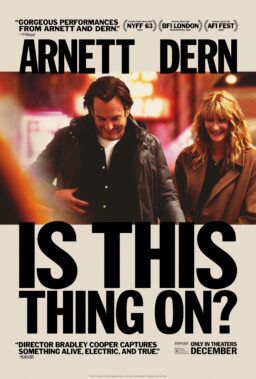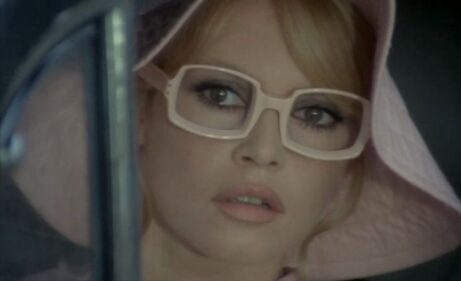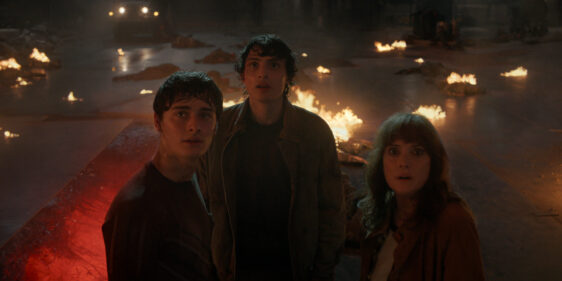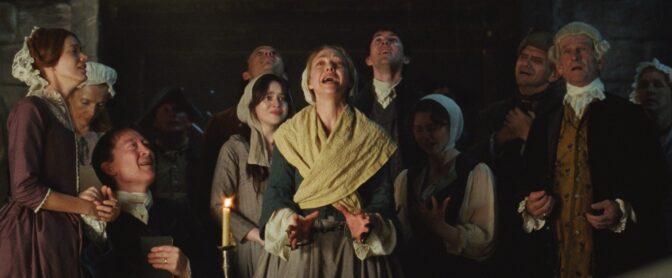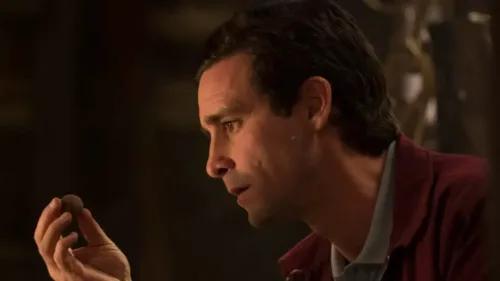Grief fills the room up of my absent child,
Lies in his bed, walks up and down with me,
Puts on his pretty looks, repeats his words,
Remembers me of all his gracious parts,
Stuffs out his vacant garments with his form.
— Constance in King John. Act iii. Sc. 4.
There’s a near-universal misunderstanding of the nature—and experience—of grief. Grief is not just “sadness.” Grief is not linear. A doctor once told me grief is akin to a concussion. The brain is damaged by the trauma and protects itself by hoarding resources. The griever may wonder, “Why am I moving in slow motion? Why can’t I concentrate?” When Constance says grief “walks up and down with” her, she’s not speaking metaphorically.
This is the stuff most ghost stories are made of, and Samuel Van Grinsven’s “Went Up the Hill,” co-written by Van Grinsven and Jory Anast, is an intense ghost story, where two traumatized people are held in place by their loss and increasingly in danger from a powerful ghost, gripping them in her clutches. The ghost isn’t ethereal. It “fills the room up,” it lies in bed with them, it “puts on [her] pretty looks,” a restless ghost with no boundaries, possessing the bodies of those she left behind.
Jack (Dacre Montgomery) and Jill (Vicky Krieps) meet for the first time at the funeral of an artist named Elizabeth. Jack is the son Elizabeth abandoned, and Jill is Elizabeth’s wife, now a widow. Jill did not know there was a Jack. Jack says that Jill called him to inform him of Elizabeth’s death. Jill says she didn’t make the call. The first mystery. The character names must be addressed. Jack and Jill “went up the hill” with innocent intentions. “A pail of water” must be fetched. Disaster ensues. Poor Jack falls and “breaks his crown.” His “nob” is patched up, but Jill, who also fell … what happened to her? Where’s Jill’s “vinegar and brown paper”? The nursery rhyme doesn’t say. These connections are not hidden; they’re right out front in ways almost too explicit, particularly when the actual film has so many unsettling tensions.
Jack is first seen trudging up a hill (of course). He enters a stone house on top of the hill. The interior is Brutalist and unfriendly. Mourners in black huddle together, giving Jack strange looks. He’s approached by Elizabeth’s intense sister Helen (the excellent Sarah Peirse), who guesses his identity and tells him he should leave. The mourners seem a little cultish, like they’ve lost their guru. Jill is first seen working at an old-fashioned loom, her face drawn and pale.
“Went Up the Hill” does not linger in prologue. Jack spends the night at the house, alone with Jill. Waking up in the middle of the night, he comes across Jill, sitting at the edge of her bed. She is somehow changed. Something is different. The next night, it is Jack who is changed. Neither really remembers what happened during these somnambulistic wanderings, but Jill insists, “It’s not us. It’s her. She’s here.” The ghost isn’t the one with unfinished business, as per the custom. It’s Jack, it’s Jill. Elizabeth fell through the ice, but when her body was found, it was discovered she had rocks in her pockets, like Virginia Woolf. Jill can’t let it go. Why would Elizabeth leave her? Jack’s mother gave him up when he was a baby, and he was shuffled around. His trauma is so deep as to be almost unfelt by him. The ghost “holds them” there, but it’s more like they hold themselves in place, unwilling to move on. Grief can be like that.
Van Grinsven and cinematographer Tyson Perkins have a firm hold on the film’s style, with a monochromatic color palette, and long, creepy shots where Jack or Jill is in the foreground, the other a blur in the background, emerging from the shadows. Space is porous. Robert Mackenzie’s sound design is eerie and effective. The silences, although capacious, are not really silences. There’s a dim roar of wind, or a subterranean humming underneath the stillness. There are moans, which could be whistling wind, but sometimes sound choral, an emanation of distress. There are distant cracks, maybe the ice on the lake coming apart. Every moment, shadow, and sound pour into the unnerving overall effect. This is Van Grinsven’s second film, and it’s extremely impressive.
All of this would just be an exercise in style if it weren’t for Krieps’ and Montgomery’s performances. “Went Up the Hill” is essentially a two-hander. Krieps, such an engaging presence in “Phantom Thread,” “Bergman Island,” and “Corsage,” is prickly and devastated here as Jill, a wife with secrets too deep and strange to tell. She seems brittle and emptied-out but formidable. Opposite her is Montgomery, who was such a visceral mullet-haired menace as Billy in “Stranger Things.” Montgomery made Billy make sense, even generating empathy for this damaged-beyond-repair bully. He was also fantastic in Baz Luhrmann’s “Elvis,” where he played Steve Binder, director of the famous “comeback special”. It’s a cameo, basically, but you remember him: the hip attire, the flash of awe when he first meets Elvis, and, later, the steely look in his eyes when dealing with the Colonel. As Jack, Montgomery is heartbreaking and mercurial, both fragile and frightening. Together, these two weave an intimate spell.
When Elizabeth “possesses” them, there is no mimicry involved; nobody speaks in different voices. This isn’t “All of Me.” The only change is in intensity. Jack and Jill are going to have to let Elizabeth go, but it’s increasingly obvious that Elizabeth will not go quietly.
The physics is sometimes murky, and I have some questions about how it all works (questions it feels ungenerous to mention, when the film succeeds at the most important thematic level).
“Went Up the Hill” doesn’t just explore grief, it expresses it.

